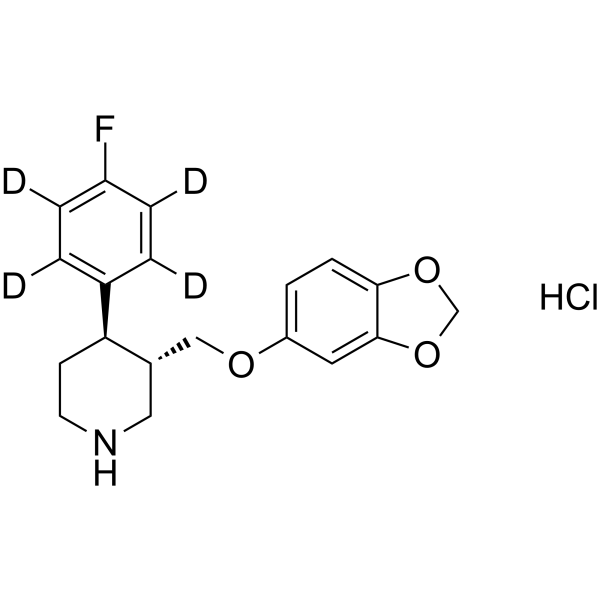2714485-95-5
| Name | Paroxetine-d4 hydrochloride |
|---|
| Description | Paroxetine-d4 (hydrochloride) is deuterium labeled Paroxetine (hydrochloride). Paroxetine hydrochloride is a potent selective serotonin-reuptake inhibitor, commonly prescribed as an and has GRK2 inhibitory ability with IC50 of 14 μM. Paroxetine hydrochloride can be used for the research of depressive disorder[1][2][3]. |
|---|---|
| Related Catalog | |
| In Vitro | Stable heavy isotopes of hydrogen, carbon, and other elements have been incorporated into drug molecules, largely as tracers for quantitation during the drug development process. Deuteration has gained attention because of its potential to affect the pharmacokinetic and metabolic profiles of drugs[1]. |
| References |
| Molecular Formula | C19H17D4ClFNO3 |
|---|---|
| Molecular Weight | 369.85 |
